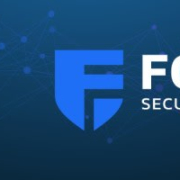



Find out what your peers are saying about Microsoft, ManageEngine, Omnissa and others in Unified Endpoint Management (UEM).



Microsoft Intune provides centralized management of mobile devices and applications, ensuring security, compliance, and productivity through integration with Microsoft services like Microsoft 365 and Azure Active Directory.
Organizations use Intune for managing mobile devices and applications, enhancing security and compliance across platforms. With features like single sign-on, conditional access, and zero-touch deployment via Autopilot, it facilitates efficient operations. Intune's scalability, easy enrollment, and capabilities such as remote wipe support diverse device management, offering robust data protection and efficient operation. Despite its features, improvement areas include reporting, compatibility with non-Microsoft devices, and better support for macOS and Linux devices.
What are the key features of Microsoft Intune?
What benefits should users look for in reviews?
In industries such as finance, healthcare, and education, Microsoft Intune is implemented to ensure secure and compliant device management. Companies leverage its capabilities to deploy security policies and manage both corporate-owned and BYOD environments, facilitating a unified approach to data protection and compliance.
Deep Freeze boosts user productivity by offering 100% workstation availability.
Install Deep Freeze and let users solve their own problems with the simple push of the restore button. It’s that easy!
Whether you need to protect thousands of workstations across your enterprise or just that one PC at home, Deep Freeze is right for the job. Are you running Windows and Mac computers? No problem, we’ve got both covered. And Deep Freeze is also ready to protect your servers giving you 100% availability
Mimecast Incydr offers a comprehensive data protection and recovery solution, ideal for organizations needing robust insider threat protection and regulatory compliance.
Mimecast Incydr provides a seamless experience across platforms with lightweight clients and centralized administration. It focuses on real-time monitoring, instant access to backups, strong encryption, and customizable risk scoring. This ensures data protection against insider threats while promoting ease of use and low system overhead. Although improvements are possible in areas like Java dependency reduction, GUI design, cloud storage integration, and comprehensive reporting, Mimecast Incydr remains valuable for data classification, legal discovery, and identity management, especially for large environments handling classified information.
What key features does Mimecast Incydr offer?Mimecast Incydr is leveraged across industries for data leakage protection and egress solution integration. It supports HIPAA-compliant backups and peer-to-peer data management, proving invaluable for corporate data protection and traveling employees facing data loss risks. Its application in legal data discovery and disaster recovery planning enhances its relevance for IT administrators and compliance officers managing data-intensive operations.
Now more than ever, your data is on the move—whether it’s on a laptop, flash drive, or moving across physical, virtual, and cloud infrastructures. At any point along the way, your financial data, customer information, intellectual property, or trade secrets could be lost or stolen. Securing this data is further complicated by several growing risk factors:
Rapidly evolving compliance regulations and mandates, including GDPR
Continued growth of workforce mobility
Employees using their own mobile devices and consumer apps for work
Rising frequency of advanced persistent threats (APTs) and data breach incidents
To avoid the embarrassment, reputation damage, regulatory fines, and revenue loss, today’s enterprise must be able to identify, track, and secure all confidential data from multiple points within the organisation and in the cloud without impacting employee productivity and performance. In the past, many organisations tried traditional data loss prevention (DLP) solutions but found they were too intrusive, too complex to manage, and too costly to acquire, deploy, and maintain.